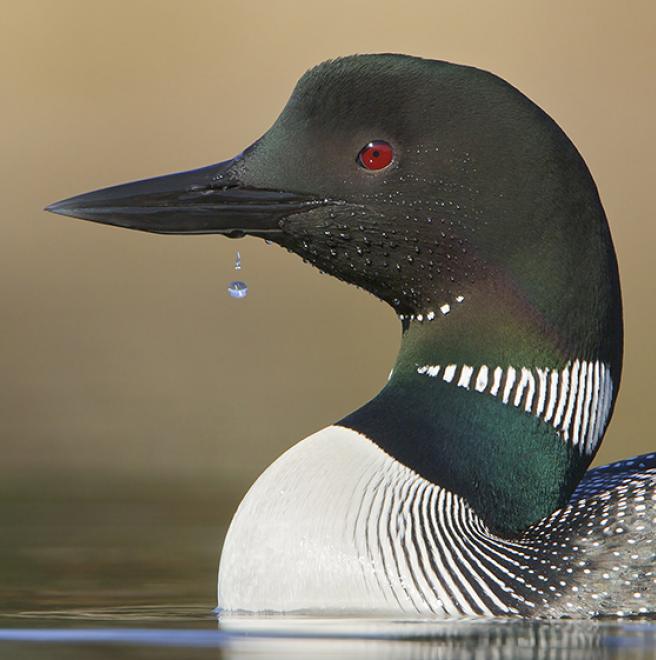

By 2080, this great icon of the north is forecast to lose 56 percent of its current summer range and 75 percent of its current winter range, according to Audubon’s climate model. In both seasons the potential to shift northwards in a warming climate is significant. While the bird may be able to keep pace with the rapidly changing world, it looks all but certain that Minnesota will lose its iconic loons in summer by the end of the century.
Are the projected range maps different from the range maps in field guides? Find the answer here.
With its brilliant red eyes and haunting call, the Common Loon is one of the most recognizable water birds in North America. A denizen of freshwater systems in the summer, it breeds throughout most of Canada and some parts of the northern United States, and migrates south along both the eastern and western North American shorelines each winter. It prefers large, clear lakes in the summer and for parts of its migration, the better to spot fish, and is mostly found on ocean waters in the winter. An expert diver, it uses its large, webbed feet to propel itself after prey, which it often swallows while still underwater. The loon often gathers in clusters, sleeping in large groups at night and foraging together during the day.
Explore more birds threatened by climate change around the country.





















It's easier than you think to make a difference. Become an Audubon member today to help birds facing climate change.